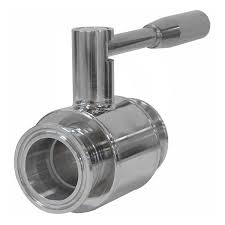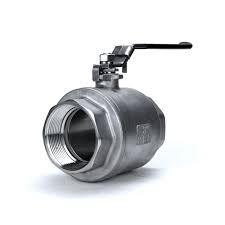1″ Stainless Steel Ball Valve

The Application of 1″ Stainless Steel Ball Valve
Introducing the 1″ Stainless Steel Ball Valve, a versatile solution for fluid control. Cameron, a renowned brand in the industry, offers top-quality Cameron brass ball valve options.
Ideal for various applications like 1 ball valve and 2pcs ball valve, it’s a reliable choice for chemical processes. Unlike gate valves, ball valves vs gate valves offer quick operation and tight shut-off.
Constructed from durable materials like A350 LF2, these valves are suitable for plumbing systems and soldering applications. With Cameron’s expertise, plumbing ball valves ensure efficient flow control and long-lasting performance.
What is a 1″ Stainless Steel Ball Valve?
1″ stainless steel ball valve is made for higher corrosion resistance than brass and copper.
Material of 1 Inch Stainless Steel Ball Valves
- Body & Cap – ASTM A351-CF8M/ASTM A216-WCB
- Ball – ASTM A351-CF8M
- Stem – ASTM A276-316
- Gland – AISI 304
- Seat – PTFE/RTFE
- Seal, Packing & Thrust Washer – PTFE
- Spring Washer & Nut – AISI 304
- Handle & Locking Device – Stainless Steel
- Handle Sleeve – PVC
The Parameter of 1″ Stainless Steel Ball Valve
- Valve Type: 1″ Stainless Steel Ball Valve.
- Size: 1 inch, suitable for small to medium-sized pipelines.
- Body Material: Stainless steel, offering corrosion resistance and durability.
- Ball Material: Stainless steel, providing excellent strength and chemical resistance.
- Seat Material: PTFE (Teflon) or other resilient materials for reliable sealing.
- End Connections: Typically available with threaded or socket weld end connections.
- Pressure Rating: ANSI 150, ANSI 300, etc., suitable for different pressure levels.
- Temperature Range: Standard operating temperature from -20°C to 200°C (-4°F to 392°F).
- Port Type: Full port design for minimal pressure drop and maximum flow capacity.
- Operation: Manual operation with a handle for easy control.
- Leakage Rate: Engineered to meet industry standards for minimal leakage.
- Compliance: Complies with industry standards such as API, ANSI, and ISO.
- Applications: Suitable for a wide range of applications including industrial, chemical, and plumbing systems.
The Operation Theory of 1″ Stainless Steel Ball Valve
The operation theory of a 1″ Stainless Steel Ball Valve involves precise control over fluid flow. When the solder ball valve is in the open position, the stainless steel ball rotates to allow fluid to pass through the valve. Comparing 3/4 ball valve price, 1 ball valve price, and 3 way ball valve price, the cost varies based on factors like size, material, and features. This valve design ensures reliable performance and efficient flow control in various applications.

The Parameters Table of 1″ Stainless Steel Ball Valve
| Parameter | Description |
|---|---|
| Valve Type | 1″ Stainless Steel Ball Valve |
| Size | 1 inch |
| Body Material | Stainless steel |
| Ball Material | Stainless steel |
| Seat Material | PTFE (Teflon) or other resilient materials |
| End Connections | Threaded or socket weld |
| Pressure Rating | ANSI 150, ANSI 300, etc. |
| Temperature Range | -20°C to 200°C (-4°F to 392°F) |
| Port Type | Full port design |
| Operation | Manual with handle |
| Leakage Rate | Meets industry standards for minimal leakage |
| Compliance | API, ANSI, ISO |
| Applications | Industrial, chemical, plumbing systems |
Relevant Information about 1″ Stainless Steel Ball Valve
- Rotor: The rotor is the ball inside the valve that rotates to control the flow of fluid.
- Stator: The stator is the stationary part of the valve, typically the valve body, that provides support and houses the rotor.
- Universal Joint: In the context of a ball valve, a universal joint is not typically used. The term is more common in systems with rotating shafts.
- Shaft Seal: The shaft seal prevents leakage along the valve shaft where it enters the valve body, ensuring the integrity of the valve.
- Driving System: For a manual ball valve, the driving system is the handle that allows users to rotate the ball to open or close the valve.
